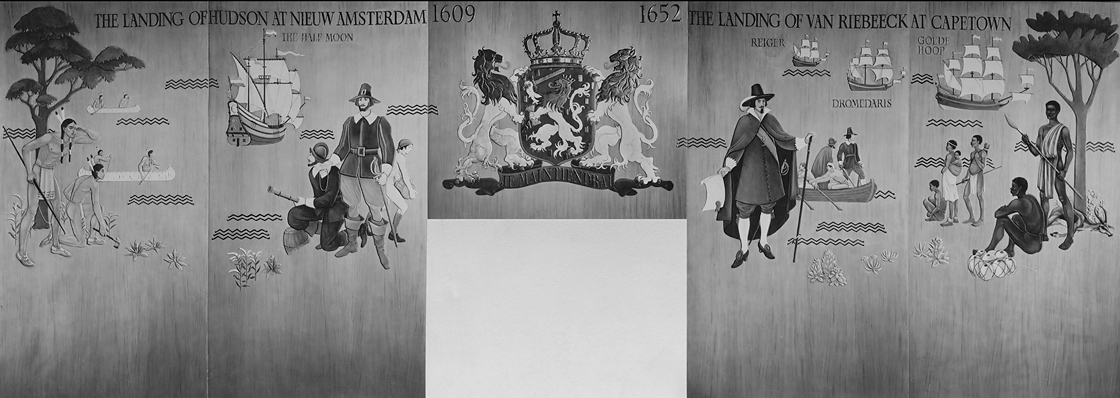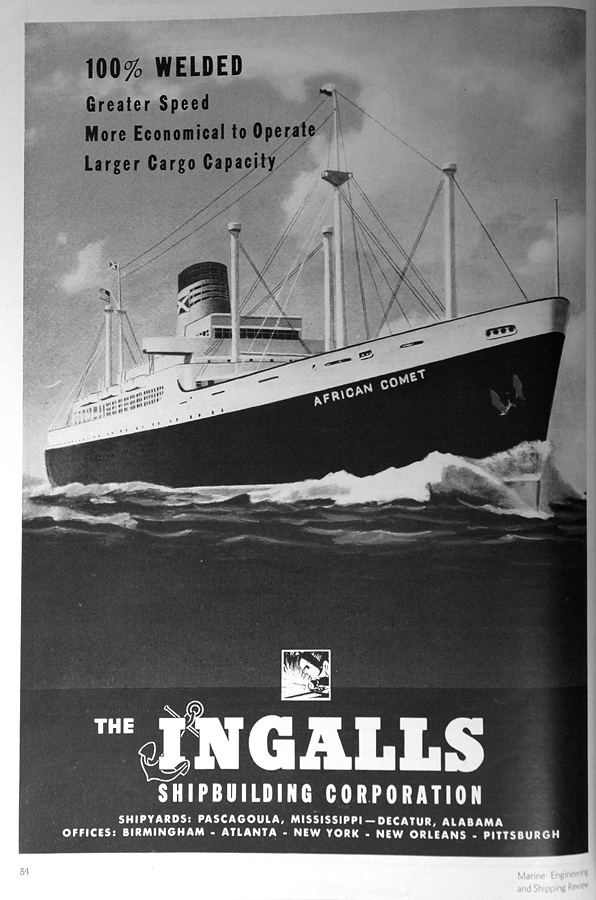Hildreth Meière Documentary Series - Watch Trailer
Hildreth Meière Documentary Series - Watch Trailer
Commissioned by: Farrell LineMedium: paint and gesso on woodExecuted by: RambuschNonextant

Wall panels for lounge
For the lounge of the S.S. African Comet, Hildreth Meière painted wall panels with the Landing of Hudson at Nieuw Amsterdam 1609 and the Landing of Van Riebeeck at Capetown 1652, separated by the Dutch royal crest. Both themes referred to Dutch colonial history. They also mirrored the route of the ship from New York to South Africa. Meière represented the ocean using double and triple zigzag lines, a visual device she employed throughout her career.
In addition to decorating the lounge of the S.S. African Comet, Hildreth Meière designed wall cut outs depicting children’s nursery rhymes for the children’s playroom. The silhouetted figures would have been immediately recognizable to any child who saw them. The cut outs were executed in paint and gesso on wood by Rambusch. Like the wall panels for the lounge, they are no longer extant.

The King Was in His Counting House

The Queen Was in the Parlor Eating Bread and Honey

Peter, Peter, Pumpkin Eater

Along Came a Blackbird

There Was an Old Woman who Lived in a Shoe
When the S.S. African Comet was launched on June 28,1941, she was the largest all-welded passenger/cargo ship afloat.
Marine Engineering and Shipping Review 47 (January 1942): 84. Dixie Press Collection, Mississippi Gulf Coast Community College, Perkinston, Mississippi
Her standardized C 3 hull and machinery led the U.S. Shipping press to describe the S.S. African Comet and her two later-built sister ships as “the most beautiful passenger carrying cargo liners ever built.”1 Although she ran trials as a merchant ship, she never entered the mercantile service for which she was intended.

S.S. African Comet. Photograph Dixie Press Collection, Mississippi Gulf Coast Community College, Perkinston, Mississippi
Following America’s entry into World War II on December 8, the S.S. African Comet was acquired by the War Shipping Administration on December 31, 1941, and purchased by the Navy on January 6, 1942. Renamed the U.S.S. Arthur Middleton, the former S.S. African Comet saw extensive action in the Pacific.2
Andrew Bell, “Ships We Forgot to Remember—The “‘African Comet,’” Sea Breezes Magazine (July 2012): 36.
Andrew Bell, “Ships We Forgot to Remember—The “‘African Comet,’” Sea Breezes Magazine (July 2012): 37